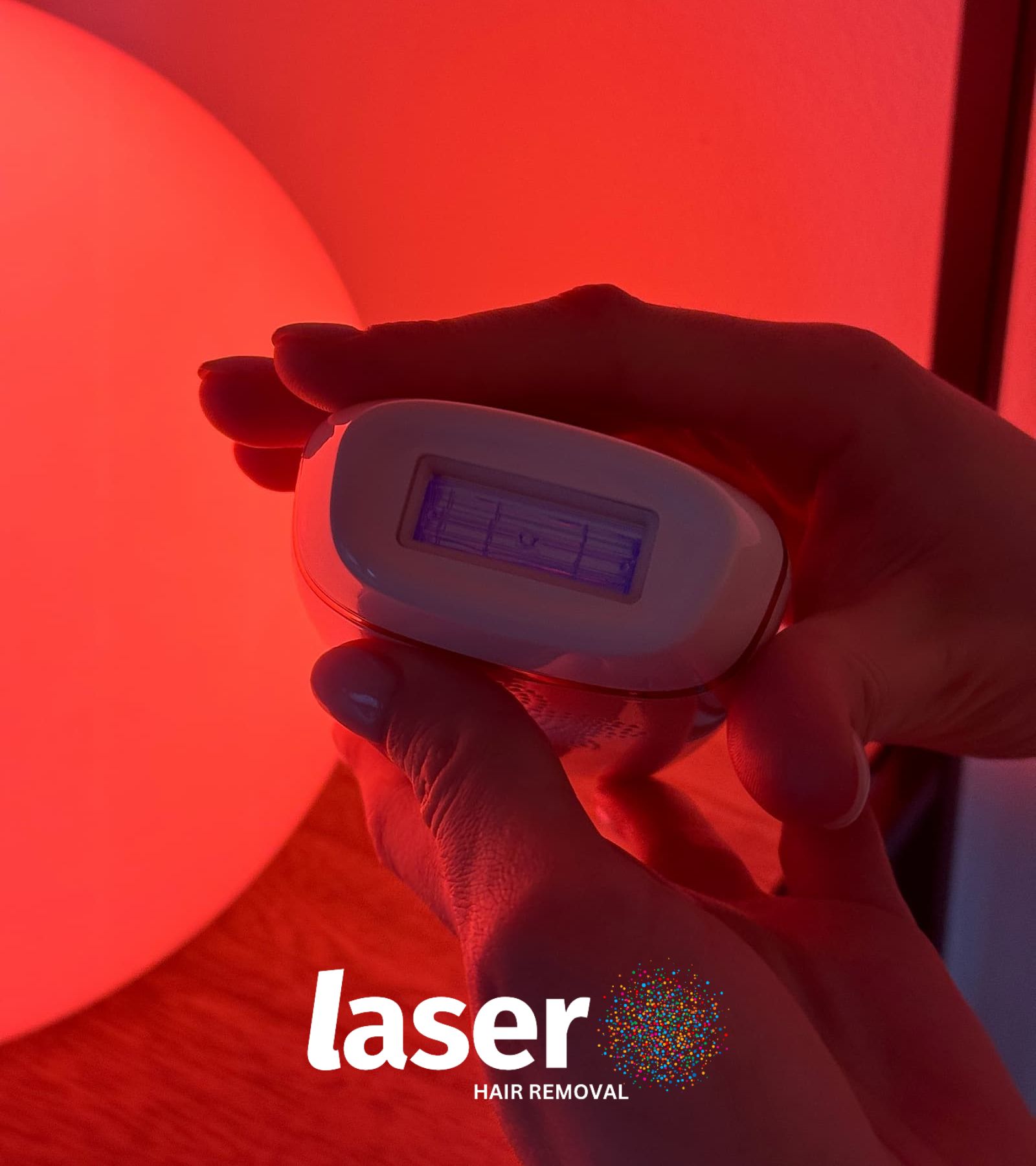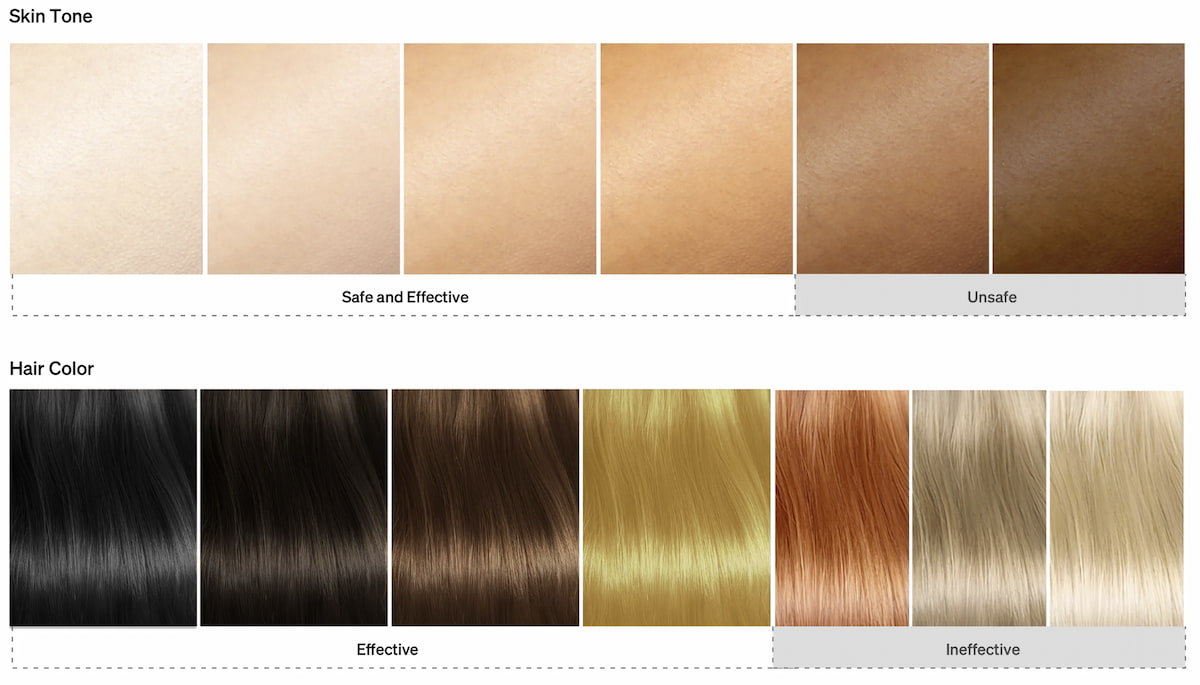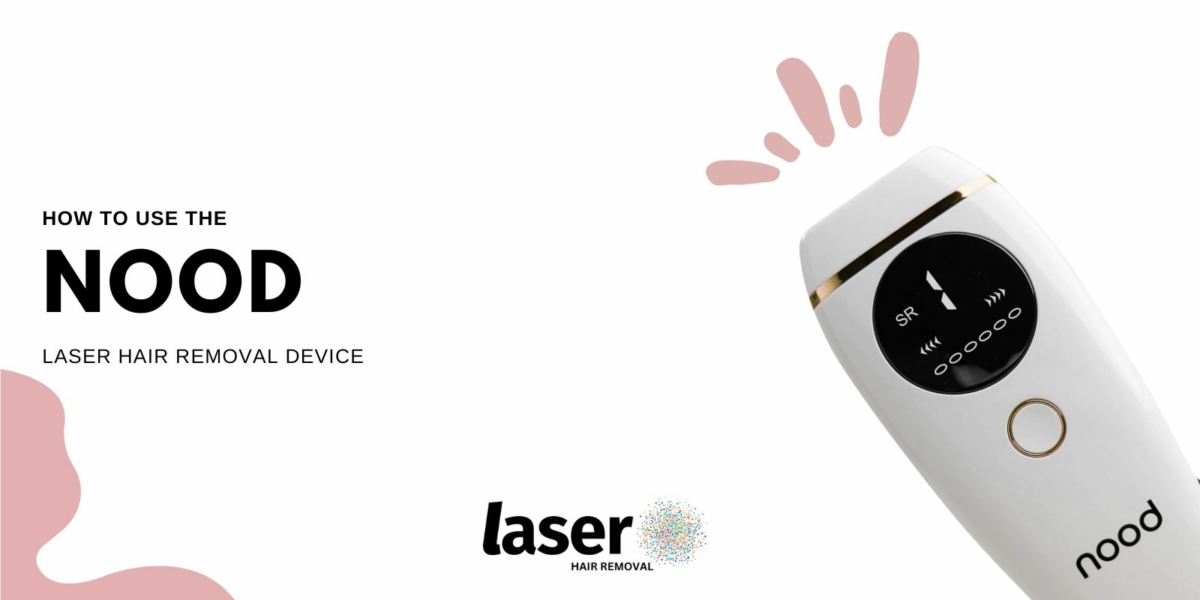The Nood Flasher 2.0 hair removal device is pretty simple to use, here’s how: first cleanse the area you wish to treat, set the device to the appropriate intensity level (usually 3 to start off), perform a small patch test and then pass it over the skin, 3 times. And by the way, Yes, you must shave before using the Nood hair removal device. Shaving before laser hair removal is important because it allows the IPL to target the hair all the way at the root, below the surface of the skin
The Nood instructions and directions are pretty straightforward. The key steps are explained below:
1. Cleanse the area you wish to treat
First, cleanse the treatment area. IPL hair removal works best on fresh and clean skin. The reason is that dirt, oil and other residues can cause issues for the laser’s ability to target the hair follicle effectively. Therefore, before using the Nood device, cleanse the area with a gentle, non-irritating cleanser and pat dry.
2. Set the Nood device to the appropriate intensity level
Next, set the device to the appropriate intensity level. Nood recommends starting at intensity lever 3 for most. The Nood device has multiple settings, ranging from 1 (low) to 7 (high). People with lighter skin tones and darker hair generally need a higher intensity setting, while people with darker skin tones and lighter hair should definitely stick to lower settings to prevent skin damage.
3. Perform a patch test
Important, before starting any IPL hair removal treatment: do a patch test. A patch test involves treating a small, discreet area of your skin with the device and waiting for at least 1 to 24 hours to ensure no adverse reactions occur. If you feel any severe discomfort, burning or blistering, immediately stop using the Flasher 2.0 and consult a dermatologist.
It’s best to wear safety goggles during treatment to protect your eyes from the laser light, but these will not be provided by Nood. O yeah, it goes without saying, do not use the device near your eyes or on areas where you wish to grow hair in the future… The Nood device provides permanent hair reduction, and any area treated may not grow hair in the future.
4. Pass over the skin
Once the device is set, apply the flasher 2.0 at a 90-degree angle on the skin. This will ensure that the laser is directly targeting the hair follicle. Start by pressing the device against your skin and pressing the ‘flash’ button. I usually don’t feel any pain but a slight warming sensation as the device works.
To treat other parts of the body or larger areas, simply pass the flasher 2.0 over your skin, making sure it stays in contact at all times. The device should pass the treatment area 3 times in a single session for the best results.

What to do after using the Nood laser hair removal device?
After the treatment with the Nood laser hair removal device, definitely avoid sun exposure and use a high-SPF sunscreen (30+ SPF) to protect the treated area. Also avoid shaving the area for 24-48 hours to prevent skin irritation.
Results are not immediate and consistent use of the Nood device over several weeks is typically required to achieve optimal results. For more information read our full Nood review.
Who can safely use the Nood laser hair removal device?
The Nood laser hair removal device is safe for use anyone with skin types I to IV on the Fitzpatrick scale. The Fitzpatrick scale is a recognized tool in dermatology, used to classify different skin types. The Nood device, however, is not recommended for individuals with skin type V and VI, typically those with darker skin tones, due to the high melanin content that may result in skin damage or ineffective results:

The Nood laser hair removal device is most effective on hair colors that have a higher concentration of melanin, such as black and dark brown hair. Lighter hair colors like blonde, red, grey or white will probably not respond very well to the treatment due to their absence or lack of melanin. The device should not be used on tattooed skin or skin with permanent makeup, as the laser can cause fading or lead to skin damage in these areas.
When should the Nood laser hair removal device be used for optimal results?
The Nood laser hair removal device should ideally be used once or twice a week for the first two to three months, then once every 3 to 6 months to maintain results. This schedule is specifically designed to target hair in the active growth phase (the anagen phase) which is the best time for laser hair reduction.
IPL hair removal works best when it targets hair follicles in the anagen phase because this is when the hair is most visible. The idea behind this is that the IPL targets the pigment (the natural coloring) in the hair, and when the hair is in this anagen phase, it contains the most pigment, making it a lot easier for the IPL to target and destroy the hair follicle. Sort of like a beacon to find the hairs.
Not all hairs are in the anagen phase at the same time, which is why multiple treatments are usually needed. The hair growth cycle consists of three phases: anagen (growth), telogen (resting), and catagen (transitional). At any given moment, only about 15-20% of your hair is in the anagen phase. That’s why, multiple successive treatments together ensure that as many hair follicles as possible are targeted during their anagen phase.
Where on the body can the Nood laser hair removal device be used?
The Nood laser hair removal device can be used everywhere on the body where hair groes but not the eyes. In other words: the underarms, arms, legs, bikini line, and back, and torso. The device is designed with advanced IPL (Intense Pulsed Light) technology, facilitating the removal of unwanted hair effectively and safely.

